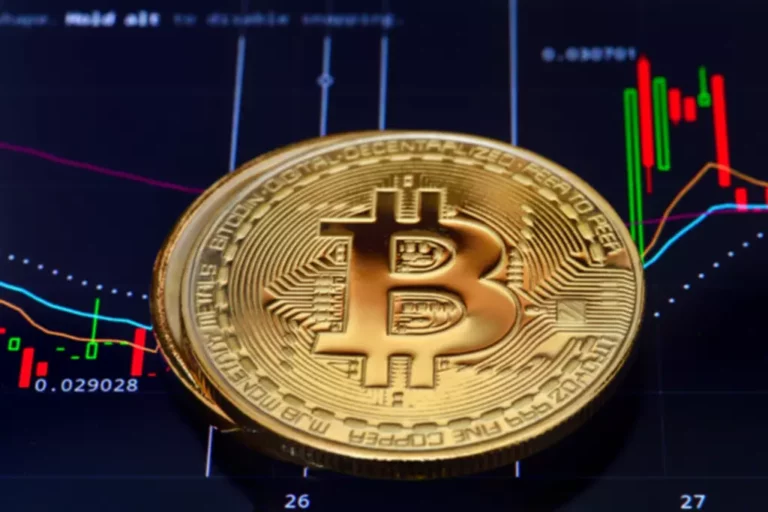Content
Each time a market maker Cryptocurrency exchange executes a retail trade, they scoop up revenue from the price-improved bid-ask spread. In order to explain this viewpoint, I need to develop quite a bit of context first. To flesh this out, we’ll start by considering today’s market structure from a few distinct perspectives.
How Does Payment for Order Flow Work?
It is vital to ensure that payment processing is as seamless as possible to prevent any delays or errors that may lead to customer dissatisfaction or loss of business. Payment processing is a multi-step process that involves several parties, including the merchant, the acquiring bank, the issuing bank, and payment networks. Payment for Order Flow is a payment made by a market maker to a broker-dealer for routing clients’ orders to them. In return, the market maker executes the order and provides liquidity to the market. Payment for Order Flow is different from commissions, where brokers charge payment for order flow clients for executing orders. Payment for Order Flow is a source of revenue for broker-dealers, and it is usually a fraction of a penny per share.
What is payment for order flow and how does Upstream’s smart-contract-powered market avoid it?
Your brokerage firm should inform you when you first open your account, and then update you annually about what it receives for sending your orders to specific parties. The Regulation National Market System (NMS), enacted https://www.xcritical.com/ in 2005, is a set of rules aimed at increasing transparency in the stock market. Most relevant here are the rules designed to ensure that investors receive the best price execution for their orders by requiring brokers to route orders to achieve the best possible price.

Introduction to Payment Processing[Original Blog]
SEC Rule 605 requires that market makers publish their execution stats every month. Looking at the recent data, it shows that wholesaling saves customers money—$3.57 billion of price improvement in 2020 alone. You’ve probably heard of “high frequency trading” (HFT)—the use of computer programs to transact stock orders very quickly to take advantage of short-term market movements. To compete with HFT players, market makers have to make very quick decisions when they quote prices, and ensure they don’t become stale against market movements. Thus, not only do they take on the risk of potential imbalances of buy and sell orders, but they have to do so quickly to stay in the game. Commission-free trading refers to $0 commissions charged on trades of US listed registered securities placed during the US Markets Regular Trading Hours in self-directed brokerage accounts offered by Public Investing.
The additional order flow that market makers receive from brokers can help them manage their inventory and balance their risk. Hence, they pay brokers for orders because they mean a steady stream of trades, which can be crucial for having enough securities to act as market makers and for profitability. Payment gateways are designed to seamlessly integrate with various e-commerce platforms, allowing merchants to accept payments on their websites or mobile applications.
Payment gateways enable businesses to accept a wide range of payment methods, including credit and debit cards, digital wallets, and even cryptocurrencies, giving customers the flexibility they desire. Payment gateways support a wide range of payment methods, allowing customers to choose their preferred mode of payment. Credit cards, debit cards, digital wallets, and even cryptocurrencies are commonly accepted through payment gateways.
Wholesale broker-dealers execute approximately 70% of the markets orders they receive out of their inventory of stocks and route the balance to other market centers, according to report by the Committee on Capital Markets Regulation. Limit orders, which must be executed at price that is no worse than the limit price set by the customer, are generally displayed and typically executed on exchanges, it said. The conflict of interest created when brokers are solely reliant on earning fees for selling order flow has created a headache for regulators, especially with the volume and transparency of data to handle.

The practice has been controversial, with critics arguing that it creates conflicts of interest and undermines the integrity of the market. In response, regulators have developed a framework for PFOF, designed to ensure that it is used in a way that is fair to investors and does not harm market integrity. They provide liquidity and execute trades on behalf of their clients, both retail and institutional. While payment for order flow is a controversial practice, proponents argue that it benefits retail investors by providing them with access to better prices. Critics, on the other hand, argue that it creates conflicts of interest and undermines market efficiency. Payment for Order flow (PFOF) is a practice that has become increasingly popular in the world of investing.
Payment gateways are online systems that facilitate the transfer of money from a customer to a merchant. They act as intermediaries, processing transactions securely, and ensuring the seamless flow of funds between the parties involved. Think of them as digital cashiers, responsible for authorizing and authenticating payments.
Costs for active traders have come down dramatically, to the benefit of investors. For now, retail investors in the United States seem to be benefiting from the current system. Payment gateways have become an integral part of the modern e-commerce landscape, allowing businesses to securely process online transactions. These powerful tools act as a bridge between customers, merchants, and financial institutions, facilitating the transfer of funds while ensuring the security and integrity of sensitive payment information. In this section, we will delve into the basics of payment gateways, exploring their functionalities, benefits, and the various types available in the market.
- Once the payment is authorized, the payment gateway notifies the merchant, allowing them to complete the order and proceed with the disbursement.
- Alpha is experimental technology and may give inaccurate or inappropriate responses.
- For a very volatile security with a quote that moves all over the place, spreads can be VERY large.
- Additionally, payment gateways streamline the payment process, reducing the risk of errors and improving overall efficiency.
- It is important for investors to be aware of payment for order flow and to understand how it may impact their trades.
- In this section, we will introduce payment gateways and discuss their importance in securing authorized transactions.
For purposes of this section, Bonds exclude treasury securities held in treasury accounts with Jiko Securities, Inc. as explained under the “Treasury Accounts” section. With the help of our clearing firm, Apex, we are able to route all trade orders directly to exchanges (e.g. Nasdaq and the NYSE) or other venues where PFOF is not part of the execution process. This is a bracket, which represents the highest prices buyers are willing to pay, the bid, and the lowest prices sellers are willing to sell, known as the ask price.
We found that PFOF can in fact allow market makers to better manage their inventory risk. 8 If a trader is informed, they will buy from the liquidity provider when they believe the value of the asset is higher than the price quoted by the liquidity providers. Conversely, informed traders will sell to the liquidity provider when the value is lower than the quoted price. This means that the informed trader profits (on average) at the expense of the liquidity provider. As liquidity providers on an anonymous central limit order book (CLOB) cannot perfectly distinguish between types of trader, they will assess the overall risk of trading with informed traders.
The practice has become an increasingly common way for brokers to generate revenue as the industry has largely done away with commissions on stock trades and significantly reduced commissions on other instruments. Payment for order flow is a controversial topic since it’s not always clear whether it benefits or hurts consumers. It’s hard to guess how the various tradeoffs here would ultimately play out — to what extent is the potential information leakage “worth it” in order to get a midpoint fill?
Stay tuned for the next section, where we will explore another annuity option to further enhance your understanding of this versatile financial tool. Immediate Payment Annuities (IPAs) are a popular choice among individuals looking for a reliable and consistent source of income during their retirement years. These annuities provide a guaranteed stream of payments that can help cover essential expenses and support a comfortable lifestyle.
Payment gateways have become a necessity for any merchant looking to accept online payments. At its core, a payment gateway is a technology that allows financial transactions to occur over the internet. It acts as a virtual bridge that securely connects a customer’s payment method, such as a credit card, with the merchant’s point of sale (POS) system. This connection enables the transfer of funds from the customer’s account to the merchant, ensuring a smooth and secure transaction process. A payment gateway is a technology that facilitates the transfer of money between a customer and a merchant. It acts as a bridge between the customer’s bank and the merchant’s bank, securely transmitting payment information and authorizing transactions.
